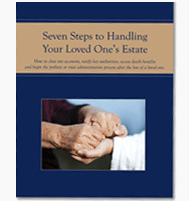3 Key Planning Steps for Autism Awareness Month | Menlo Park Special Needs Attorney
As a Menlo Park special needs attorney, I wanted to highlight that April is Autism Awareness Month, which seeks to educate the public about the needs and challenges facing those with autism spectrum disorders.
It was only 50 years ago that autism was referred to as “refrigerator mother syndrome” by medical professionals who felt children displaying symptoms of autism were acting out because of “lack of maternal warmth” at home.
Fortunately our understanding of autism spectrum disorders has come a long way since then and the medical community now recognizes autism to be a complex neurobiological disorder that affects a person’s ability to properly communicate and develop social relationships.
According to AutismSpeaks.com, the disorder affects one in 110 children in the United States, with boys being four times more likely than girls to be diagnosed on the spectrum. The prevalence of autism has also increased 57 percent from 2002 to 2006, thus prompting The Centers for Disease Control and Prevention to refer to autism a “national public health crisis”.
While autism awareness is at an all time high, I’ve personally found as a Menlo Park special needs attorney that awareness from a legal perspective is sorely lacking, as many parents of special needs children are still in the dark as to the planning steps necessary to make sure their child stays protected if, and when, death or incapacity of the parent occurs.
As much as any parent of a special needs child hates to think about it, there will come a time when they are physically unable—or perhaps no longer alive—to oversee their child’s care.
That’s why it’s so critical for parents to plan ahead and make sure they have the right legal tools in place so their child remains physically and financially cared for in their absence. To achieve this goal, I typically recommend parents of special needs children to start with the following 3 steps:
1. Name Guardians — It’s important for parents to name short- and long-term guardians who can oversee their child’s care if something unexpectedly happens to them. Without such designations in place, the child could end up in a lengthy custody battle—or worse, be placed in foster care if the unthinkable happens.
2. Set up a Special Needs Trust — A special needs trust is a legal tool that ensures a disabled child’s needs are taken care of and quality of life preserved if something happens to mom or dad. Without this critical tool in place, an inheritance left outright to a disabled child could interrupt their eligibility for Social Security or Medicaid (which is often the only health care option available!) in the future. Instead, a Special Needs Trust helps to ensure that the child receives such financial benefits without actually having assets in their name—thus leaving all government benefits intact.
3. Build a Team of Support — It’s never too early to start building a team of trusted caregivers and advisors who can immediately step in and help the child if a crisis occurs. Such team members may include the child’s legal guardians, a trusted doctor, financial advisor, estate planning attorney, and dedicated family or friends. Building a team now also helps to ensure you have the right people in place, as opposed to someone who will prey upon your child’s weakness in an emergency.
The most important thing a parent of a special needs child can do is to plan ahead as though their child will require a lifetime of care. Fortunately, with early detection and new aggressive therapies this may not be the case, but at least parents will have the peace of mind knowing that their child will be physically and financially cared for if something happens to them.

 Comments (3)
Comments (3)





Thanks for post. I think that this article is interesting . I like your article. I need to know how can I subscribe to your blog?. I will be follow you blog each 8 days.
You can click the rss feed on the home page of my site – http://www.chillag.com. That way you will receive the blogs as they are posted.
Saved, I really like your blog! 🙂